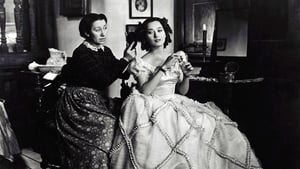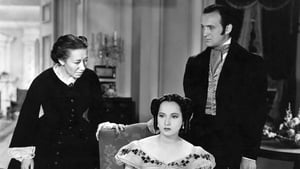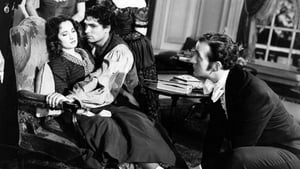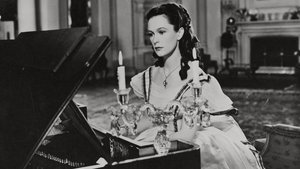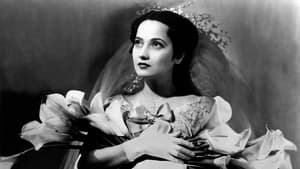Contact: info@alwanfilm.com
Video Sources 0 Views
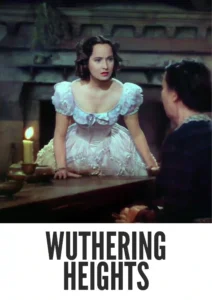
Synopsis
Wuthering Heights 1939 Colorized Review: A Gothic Romance Revisited in Color

Introduction
Few literary adaptations have captured the dark, brooding essence of a classic novel quite like Wuthering Heights (1939). Directed by the visionary William Wyler, this film adapts Emily Brontë’s timeless tale of passion, vengeance, and the destructive nature of love. First released in black and white, the 1939 version of Wuthering Heights remains one of the most celebrated cinematic adaptations of a 19th-century novel. However, in recent years, this haunting romance has been reintroduced to audiences in a colorized version, sparking new conversations about the impact of colorization on such a visually atmospheric film.
In this review, we’ll take a deep dive into the film’s artistic elements, including the direction, performances, and adaptation of the source material. We’ll also explore the significance of the colorized version, examining how this technical change impacts the film’s mood, narrative, and legacy within the context of both cinematic and literary history.
Check The Full Colorized Movies List
Check Our Colorized Movies Trailer Channel
Understanding Wuthering Heights 1939 Colorized: Director, Cast, and Genre
Director’s Vision
William Wyler, one of the most respected directors of Hollywood’s Golden Age, brought his extraordinary talent to Wuthering Heights (1939). Wyler’s direction is precise and atmospheric, using the windswept Yorkshire moors as both a setting and a metaphor for the turbulent emotions of the characters. His ability to create tension and convey unspoken emotions through subtle yet powerful visual cues is one of the film’s greatest strengths.
Wyler’s vision was to remain as faithful as possible to the emotional core of Brontë’s novel while making certain narrative and structural changes to suit the film medium. The director chose to focus on the first half of Brontë’s story, highlighting the passionate but doomed relationship between Heathcliff and Catherine, and leaving out the next generation’s story that concludes the novel. This decision allowed Wyler to zero in on the Gothic romance aspect of the tale, emphasizing the themes of obsession, class conflict, and revenge.
The Iconic Performance of Actors
Wuthering Heights (1939) features an unforgettable cast that brings Brontë’s characters to life in ways that continue to resonate with audiences. Laurence Olivier’s portrayal of the brooding, vengeful Heathcliff is a career-defining performance. Olivier captures Heathcliff’s torment and complexity, portraying him as both a victim of cruel social hierarchies and a man consumed by an all-encompassing obsession. His portrayal remains one of the most iconic in the history of romantic antiheroes.
Merle Oberon shines as the wild and passionate Catherine Earnshaw, Heathcliff’s ill-fated love. Oberon imbues Catherine with both vulnerability and fierceness, making her a tragic figure caught between societal expectations and her uncontrollable emotions. The chemistry between Olivier and Oberon adds a palpable intensity to their scenes together, making the characters’ connection feel raw and authentic.
Supporting performances by David Niven as the gentle Edgar Linton and Flora Robson as the loyal servant Ellen Dean (Nelly) help ground the narrative, balancing the story’s more dramatic elements with subtle, quieter moments.
Exploring the Genre
Wuthering Heights (1939) falls under the category of Gothic romance, a genre characterized by its dark, moody atmosphere, elements of the supernatural, and intense emotional stakes. Like Brontë’s novel, the film deals with themes of love, loss, revenge, and the destructive nature of obsession. The film’s setting—both the imposing Wuthering Heights estate and the vast, untamed moors—serves as a character in its own right, amplifying the film’s Gothic tone and creating an oppressive, haunted atmosphere.
Wyler’s adaptation also fits within the broader tradition of romantic tragedies, as the doomed love affair between Heathcliff and Catherine unfolds against the backdrop of rigid social structures and class conflicts. The genre conventions of forbidden love, emotional turmoil, and tragic consequences are at the heart of this timeless story.
Exploring the World of Wuthering Heights 1939 Colorized: Plot and Characters
Detailed Synopsis
Wuthering Heights (1939) opens with the arrival of a new tenant, Mr. Lockwood, at Thrushcross Grange, where he learns the story of the nearby Wuthering Heights estate from the housekeeper, Ellen Dean. The film flashes back to the past, revealing the intense and tumultuous love story between Heathcliff (Laurence Olivier), a dark and brooding orphan, and Catherine Earnshaw (Merle Oberon), the headstrong daughter of the estate’s owner.
As children, Heathcliff and Catherine form a close bond, but their relationship becomes strained as they grow older, particularly when Catherine becomes torn between her love for Heathcliff and her desire for social advancement through marriage to the wealthy Edgar Linton (David Niven). Heathcliff’s sense of betrayal drives him to leave Wuthering Heights, only to return years later, wealthier but hardened by bitterness and revenge.
The second half of the film follows Heathcliff’s vengeful quest to claim both Wuthering Heights and Thrushcross Grange, as well as his obsessive desire to reclaim Catherine, despite her being married to Edgar. The story culminates in tragedy, as Catherine’s unresolved love for Heathcliff leads to her death, leaving Heathcliff to live out the rest of his days haunted by her memory.
Complex Protagonists and Supporting Characters
Heathcliff is a classic example of the romantic antihero—mysterious, passionate, and deeply flawed. His intense love for Catherine drives much of the film’s narrative, and his descent into vengefulness after being spurned forms the emotional core of the story. However, he is far from a one-dimensional villain. Wyler and Olivier manage to convey the complex interplay of victimhood and agency that defines Heathcliff’s character.
Catherine, in turn, is equally multifaceted. Torn between her love for Heathcliff and her desire for a comfortable life with Edgar, she embodies the conflict between personal desire and societal expectations. Her choices ultimately lead to her downfall, making her one of literature’s most tragic and unforgettable heroines.
Supporting characters like Edgar Linton and Isabella Linton provide contrast to the tumultuous relationship between Heathcliff and Catherine, embodying the more refined, restrained side of English society. Their interactions with Heathcliff and Catherine add depth to the story, illustrating the far-reaching consequences of unbridled passion and resentment.
The Art of Film Colorization
Understanding the Process
Film colorization is a fascinating and intricate process that involves adding color to black-and-white films. This can be done using a variety of methods, from early techniques involving hand-painting frames to modern digital colorization. With today’s technology, digital artists can apply realistic and historically appropriate colors to classic films, often using extensive research to determine how the original filmmakers might have envisioned their work in color.
For Wuthering Heights (1939), colorization presents unique challenges due to the film’s intentionally dark and moody visual style. In many scenes, shadows and dim lighting are used to reflect the characters’ emotional states and the bleakness of their surroundings. Colorizing such a film requires a delicate balance to maintain the atmosphere without undermining the director’s original vision.
Development Over Time
Film colorization began as an experimental process in the early 20th century, with early examples using hand-coloring or tinting techniques. However, it wasn’t until the advent of digital technology that colorization became more widely accepted and technically sophisticated. Modern colorization efforts often use AI algorithms and meticulous frame-by-frame adjustments to achieve a seamless result, allowing films like Wuthering Heights (1939) to be viewed in color without losing their cinematic integrity.
Early Colored Films: A Brief History
Emergence of Early Colored Techniques
The history of color in cinema dates back to the silent film era, when early filmmakers experimented with tinting and toning techniques to add color to specific scenes. These early methods were rudimentary, often applying a single color wash to entire scenes to create a particular mood or highlight a specific element of the story. For example, blue tones were often used to represent night scenes, while red hues signified dramatic or emotional moments.
The true revolution in color filmmaking came with the introduction of Technicolor in the 1930s. Technicolor used a three-strip process that captured red, green, and blue light separately, producing vibrant, realistic colors. This technique was used in films such as The Wizard of Oz (1939) and Gone with the Wind (1939), marking the beginning of widespread color filmmaking in Hollywood.
Wuthering Heights 1939 and Its Early Colored Version
The Decision to Release in Color
The decision to release a colorized version of Wuthering Heights (1939) came with the aim of reintroducing the film to modern audiences while enhancing its visual appeal. For a film as atmospheric and visually significant as Wuthering Heights, the introduction of color offers new ways to interpret its setting and characters. The moors, once depicted in stark black and white, now come alive with deep greens and browns, while the characters’ costumes and the interiors of Wuthering Heights and Thrushcross Grange gain new layers of detail.
However, the colorization also poses a challenge. The original black-and-white cinematography was carefully crafted to evoke a specific mood—one of foreboding, desolation, and melancholy. Colorizing the film risks altering this atmosphere, and purists may argue that the film loses some of its emotional power when the stark contrast between light and dark is softened by the addition of color.
Impact on the Visual Narrative
While the colorization of Wuthering Heights (1939) undeniably adds visual interest, it also shifts the audience’s focus. Scenes that were once defined by shadow and light now have a broader palette of colors to convey mood and tone. For example, Heathcliff’s brooding presence is softened when his dark clothing is rendered in softer hues, and the bleakness of the moors is less stark when depicted in natural colors.
However, for viewers unfamiliar with the original black-and-white version, the colorized film can still evoke a powerful sense of place and mood. The emotional intensity of the story remains intact, and the added color might even make the film more accessible to modern audiences who are more accustomed to watching films in color.
The Debate Over Film Colorization
Controversy and Artistic Integrity
Film colorization has long been a topic of controversy among film historians, directors, and critics. While some view colorization as a way to breathe new life into old films, others see it as a violation of the original artistic intent. This debate is particularly relevant in the case of Wuthering Heights (1939), a film whose visual style is so integral to its mood and storytelling.
Critics of colorization argue that black-and-white cinematography is a deliberate artistic choice, not merely a limitation of the time. In films like Wuthering Heights, the interplay of light and shadow is a crucial narrative device, reflecting the emotional states of the characters and the Gothic tone of the story. Adding color, they argue, risks diluting these carefully constructed visuals.
On the other hand, proponents of colorization believe it allows classic films to reach new audiences. In an era where color is the norm, black-and-white films may seem inaccessible to younger viewers, and colorization can make these films more engaging without changing their core narratives.
Examining Wuthering Heights 1939 as an Early Colored Film
How Colorization Enhances or Detracts from the Viewing Experience
The colorization of Wuthering Heights (1939) undoubtedly changes the way the film is perceived. For some viewers, the addition of color brings new life to the film, making the landscape more immersive and the characters more vivid. The deep greens of the moors and the warm tones of the interior scenes create a richer visual experience, and the costumes gain new layers of texture and detail.
However, for others, the colorization detracts from the film’s original power. The stark, haunting visuals of the black-and-white version are part of what made the film so effective in conveying the bleakness of the story. By adding color, the film loses some of its Gothic edge, and the emotional weight of certain scenes is diminished.
Ultimately, whether colorization enhances or detracts from Wuthering Heights (1939) depends on the viewer’s perspective. For those who appreciate the film as a product of its time, the black-and-white version remains the definitive experience. But for new audiences, the colorized version offers a fresh way to engage with this classic tale.
Influence and Legacy: Wuthering Heights 1939 Colorized’s Impact on Cinema
A Pioneer in Literary Adaptation
Wuthering Heights (1939) was one of the earliest and most successful adaptations of a major literary work into film, setting a precedent for future adaptations. Its success demonstrated that even complex, emotionally driven stories like Brontë’s could be translated to the screen without losing their depth and nuance. The film paved the way for later adaptations of classic novels, particularly within the Gothic and romantic genres.
The film’s focus on atmosphere and mood, combined with its strong performances and carefully crafted narrative, influenced many later directors and filmmakers. It also helped solidify Laurence Olivier’s reputation as a leading actor in both stage and screen adaptations of classic works, and it further established William Wyler as a director capable of bringing emotional depth to cinematic storytelling.
The Lasting Appeal of Wuthering Heights 1939
Despite being over 80 years old, Wuthering Heights (1939) continues to resonate with audiences. Its themes of love, obsession, and revenge are timeless, and its moody, atmospheric setting remains one of the most iconic depictions of the Yorkshire moors in cinema. The film’s influence can be seen in later Gothic romances, as well as in more contemporary adaptations of classic literature.
While the colorized version has introduced the film to a new generation, the original black-and-white version remains the most widely celebrated. Both versions, however, serve as a reminder of the enduring power of Brontë’s story and the lasting impact of Wyler’s masterful direction.
Director’s Cinematic Legacy: Beyond Wuthering Heights 1939 Colorized
William Wyler’s Influence on Filmmaking
William Wyler’s career spanned several decades, and his influence on both Hollywood and international cinema is immense. Known for his versatility and ability to direct films in a wide range of genres, Wyler is often regarded as one of the most accomplished directors of his time. His films include other classics such as The Best Years of Our Lives (1946), Roman Holiday (1953), and Ben-Hur (1959), the latter of which won a record 11 Academy Awards.
Wyler’s work on Wuthering Heights (1939) is often considered one of his finest achievements, particularly for the way he captured the emotional complexity of the story. His ability to draw powerful performances from his actors and his meticulous attention to detail in the film’s production design and cinematography have made Wuthering Heights a benchmark in Gothic romance filmmaking.
Themes Explored in Wuthering Heights 1939 Colorized
Darkness, Obsession, and the Human Condition
At its heart, Wuthering Heights (1939) is a story about the destructive nature of obsession. Heathcliff’s consuming love for Catherine, and his subsequent quest for revenge when she chooses Edgar Linton over him, drives the entire narrative. The film explores how unchecked passion can lead to ruin, not only for the individuals involved but for those around them as well.
The theme of class conflict is also central to the story. Heathcliff’s outsider status and his desire to rise above his station are key motivators for his actions. His longing for Catherine is intertwined with his desire for social acceptance, making his character’s arc both deeply personal and symbolic of the rigid class structures of 19th-century England.
Finally, the film touches on the theme of the supernatural, with Catherine’s ghost appearing to Heathcliff after her death. This element of the story reinforces the idea that some emotions—like love and vengeance—are so powerful that they transcend life and death.
Reception and Controversy Surrounding Wuthering Heights 1939 Colorized
Initial Critical Reception
When Wuthering Heights was released in 1939, it was met with widespread critical acclaim. The film received praise for its performances, particularly Laurence Olivier’s portrayal of Heathcliff, as well as for its atmospheric cinematography and faithfulness to the spirit of Brontë’s novel. The film was nominated for eight Academy Awards, including Best Picture, and won the Oscar for Best Cinematography for Gregg Toland’s stunning black-and-white visuals.
Despite its success, some critics took issue with the film’s decision to omit the second generation of characters from Brontë’s novel, arguing that this left the story feeling incomplete. However, most agreed that the film’s focus on Heathcliff and Catherine’s relationship made for a more tightly structured narrative, and Wyler’s adaptation is still regarded as one of the best film versions of the novel.
Controversy Surrounding the Colorized Version
The colorized version of Wuthering Heights has sparked debate among film historians and fans of the original. While some appreciate the visual enhancement and the opportunity to experience the film in a new way, others argue that the colorization detracts from the film’s intended atmosphere. The stark black-and-white cinematography was a deliberate artistic choice, designed to evoke the bleakness of the moors and the emotional intensity of the story. By adding color, some believe that the film loses some of its Gothic power.
Where to Watch Wuthering Heights 1939 Colorized Online
For viewers interested in watching Wuthering Heights (1939), both the original black-and-white version and the colorized release are available on various streaming platforms. Services like Amazon Prime Video, HBO Max, and Turner Classic Movies often feature the film in their classic cinema collections. DVD and Blu-ray editions, including special releases with both versions, are also available for purchase.
FAQs About Wuthering Heights 1939 Colorized
Q: Who directed Wuthering Heights (1939)?
A: The film was directed by William Wyler, one of the most celebrated filmmakers of Hollywood’s Golden Age.
Q: Is the colorized version of Wuthering Heights (1939) worth watching?
A: The colorized version offers a new visual experience, making the film more accessible to modern audiences. However, purists may prefer the original black-and-white version for its atmospheric cinematography.
Q: What are the major themes of Wuthering Heights (1939)?
A: The film explores themes of love, obsession, revenge, class conflict, and the supernatural, reflecting the dark, Gothic tone of Brontë’s novel.
Q: Where can I watch Wuthering Heights (1939)?
A: Wuthering Heights (1939) is available for streaming on platforms like Amazon Prime Video and HBO Max. It can also be purchased on DVD or Blu-ray.
Conclusion
Wuthering Heights (1939) remains a timeless cinematic adaptation of one of literature’s most enduring novels. William Wyler’s masterful direction, combined with unforgettable performances by Laurence Olivier and Merle Oberon, brings Brontë’s Gothic romance to life in a way that still resonates with audiences today. While the colorized version offers a fresh take on the film, the original black-and-white version remains the definitive experience, preserving the atmospheric visuals and emotional intensity that make this film a classic.
Whether watched in color or in its original format, Wuthering Heights (1939) is a must-see for fans of Gothic romance, classic cinema, and literary adaptations. Its themes of love, obsession, and revenge continue to captivate audiences, proving that some stories truly are timeless.

